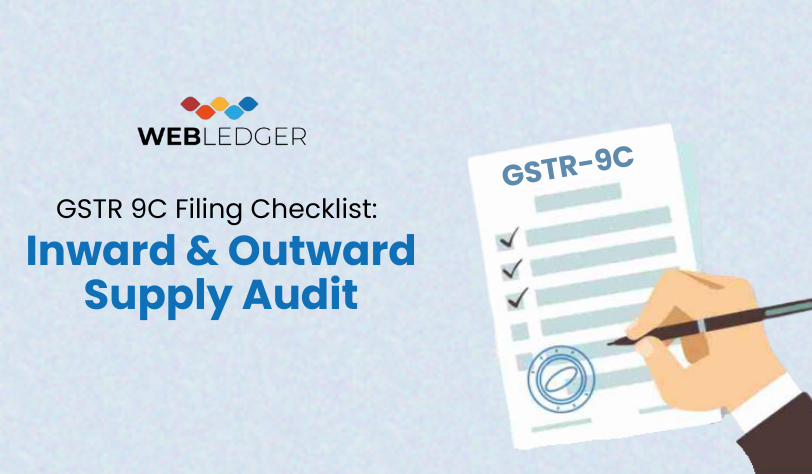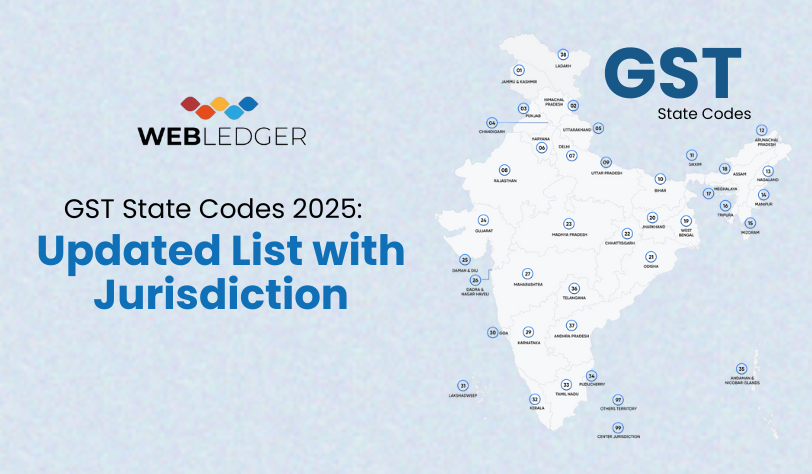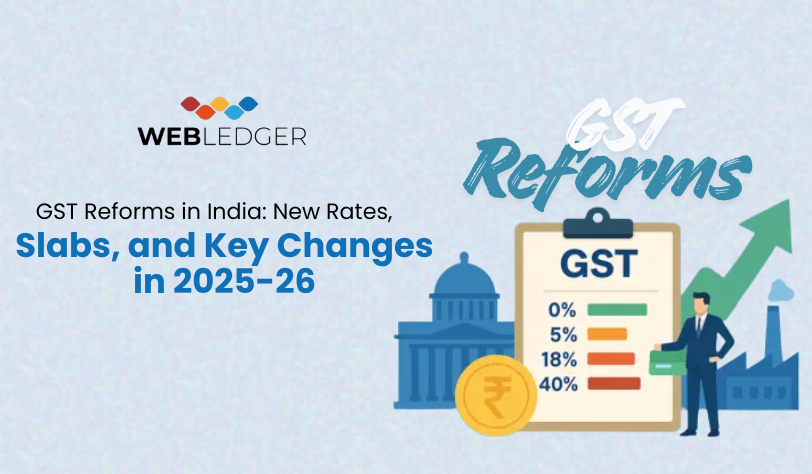Are you wasting hours on ledgers, logging every single transaction in your daybook and cash book? Do you wish these monotonous activities could be automated so that you can have more time to grow your business? You’ve come to the right place! Learn how to automate your day book and cash book entries.
In today’s world of quick business, efficiency is the key. Manual bookkeeping is such a time-waster, so easy to do wrong, and requires your precious resources. You can imagine what you could be doing if you could save those hours of bookkeeping and be able to plan, handle customer relationships, or have a better work-life balance.
This change can transform the manner in which you work your finances and make you smarter at work. Let us observe how you can automate such activities and improve your business.
Understanding the Daybook and Cash Book: The Basics of Your Financial Records
Let’s just run through the daybook and cash book significance in your books before we engage in automation.
Better Accounting
Please enter the OTP below to proceed.
Daybook: Your daybook is your master journal. All your business transactions are entered here in chronological order. This includes your sales, purchases, receipts, and payments. A well-kept daybook gives you a clear statement of all your business activities.
Cash Book: A part of the daybook where your cash inflows and outflows are recorded. It is a detailed account of all your cash transactions, reflecting the amount of money you have at any point.
Historically, businesses have had these important records kept manually. That means recording every transaction, which can lead to:
Time Consumption: Manual entry of all the details is time-consuming, especially for companies with high transaction volumes.
Human Errors: There are chances of human errors, which lead to incorrect financial statements.
Lack of Real-Time Visibility: Manual records provide outdated information, and it is not easy to make timely, informed decisions.
Difficulty in Analysis: It is tedious and time-consuming to extract valuable insights from manual records.
Bookkeeping Process: Automate Your Day Book and Cash Book Entries
This is where automating your daybook comes into play. With technology, you can automate posting and maintaining your daybook and cash book entries. This avoids the hassles of manual processes and has several benefits.
How does automation do its thing? It mostly uses bookkeeping software. These computer programs help in easing your financial processes, like recording transactions automatically from different sources.
Major Benefits of Automating Your Daybook and Cash Book
Automating your daybook and cash book can greatly benefit your business. Below are the major benefits:
1. Saves Time:
Automation saves you time spent on manual data entry. You can automatically import transactions from bank statements, online payment systems, and other sources, thus having time to focus on essential tasks.
2. Improve Precision:
Automation corrects errors caused by human errors in manual entries. Automated tools maintain your transactions accurately and regularly, giving you clear financial information.
3. In-Time Cash View:
Bookkeeping programs give you an in-time view of cash flow. You can see clearly your cash inflows and outflows and manage your money more effectively.
4. Improve Efficiency:
Automation simplifies your accounting process and reduces the likelihood of delays. You can quickly generate financial reports and get a head start on analysing the performance of your business.
5. Stay Organised:
Automated systems arrange your financial data in a structured manner that you can access at any time. You can find a single transaction easily, generate reports, and get a sense of your financial health.
6. Cut Costs:
You do pay upfront for accounting software, but you save more in the long run. You’ll reduce labour work, lower the risk of costly mistakes, and make your business operate more efficiently.
7. Improved Business Decisions:
With current and accurate financial information, you will be able to make informed business decisions. You can understand your cash flow better, track your expenses, and bifurcate your profit.
8. Seamless Integration:
It is relatively easy to integrate most bookkeeping software with other business applications such as invoicing programs, payment processors, and online stores. This further streamlines the process of moving financial information to your daybook and cash book.
Choosing the Right Bookkeeping Software for Your Business
To automate your cash book and daybook properly, you need to select the right bookkeeping program for your business. There are several options available, so think about these factors of importance:
Ease of Use: Pick software that is simple and convenient to operate. You do not need to be extremely techno-savvy. A simple interface will simplify you moving over without any glitches.
Features and Functionality: Review the features of the software and ensure they meet your bookkeeping requirements. Ensure features such as automatic reconciliation with banks, invoice generation, tracking of expenses, and reporting.
Scalability: Choose a software that can adapt to your growing business. It should be able to manage increasing transactions as your business grows without compromising on performance.
Integration Capabilities: If you have additional business software, ensure the bookkeeping software can easily integrate with them.
Security: Your information, in this instance, financial data, needs to be protected. Ensure you pick a software firm with reliable security mechanisms to protect your money’s data.
Customer Support: Check the support time and the quality of customer care. Quality customer care is important in case you have any issues.
Pricing: Check the different pricing plans and choose one that suits your budget while offering good value.
Also read: Smart Business Software for Effortless Daily Operations
Finding Alternatives to Tally: New Bookkeeping Solutions
Tally has long been India’s choice of accounting software. That changed with the recent emergence of new alternatives based on cloud technology. These new solutions tend to offer improved automation, user-friendly designs, and easy integration.
When searching for an alternative to Tally, look for software that provides:
Cloud Accessibility: Cloud software makes it easy for you to access your financial data anywhere and at any time, on any device. This ease of access makes collaboration easy.
Automatic Bank Feeds: Most modern solutions allow you to import bank transactions into the software automatically, reducing manual data entry.
Intuitive User Interface: More modern software often has less complicated interfaces than older desktop applications.
Advanced Reporting and Analytics: Advanced accounting software usually comes with better reporting and analytics features, giving you a better understanding of your business performance.
Integration with Online Tools: Seamless integration with online payment processing, e-commerce websites, and other cloud-hosted applications can simplify your operations.
Choosing a Tally alternative that emphasises automation can help your bookkeeping efficiency and provide you with a more modern financial management experience.
Implementing Daybook and Cash Book Automation: A Step-by-Step Guide
Want to automate your cash book and daybook entries? Follow these simple steps on how to automate cash book and day book entries:
1. Assess Your Current Needs: Go through your bookkeeping process, areas of pain, and what you need to automate.
2. Research and Compare Software Programs: Investigate different bookkeeping software programs. Read reviews, compare functionalities, and avail yourself of free trials if available.
3. Select the Appropriate Software: Select software that suits your business requirements, budget, and technical expertise.
4. Setup Your Account: Sign up for your selected software and input your business information.
5. Connect Your Bank Accounts and Other Sources: Connect your bank accounts and online payment processors to the software for automatic imports of transactions.
6. Personalise Your Settings: Set up the software to your needs, such as a chart of accounts, tax settings, and reporting options.
7. Import Existing Data (Optional): If you have existing manual records, you may need to import them into the new software. Ensure that the software allows data import tools.
8. Train Your Team: If others help with bookkeeping, ensure they know how to use the new software and understand the automated processes.
9. Monitor and Review: Regularly check the automated processes to ensure they are accurate. Review the reports to understand your financial performance.
Future of Bookkeeping
Automating your cash book and daybook entries saves time and makes your financial management more efficient, accurate, and informative. By applying bookkeeping software and looking at new alternatives rather than old solutions, such as the Tally, you can make your bookkeeping process a useful tool.
Imagine having the ability to view your cash flow in real-time, monitor your spending and income with ease, and generate useful reports at the click of a button. That is what is possible with daybook automation. It enables you to make informed financial choices so you can concentrate on business development and success.
Conclusion
Start today. Explore bookkeeping software, acquire the right solution for your business, and say goodbye to the tedium of manual daybook and cash book postings. Propose automation and enjoy greater efficiency and mastery of your firm’s finances.
With WebLedger Books, you can record your payments, receipts and contra entries and accordingly you will be automatically able to generate the day book through WebLedger Books. You can create multiple ledgers for multiple accounts and store your receipts and payments on the cloud. Get your daily expenses organised with WebLedger Books. Sign up for a free demo today and discover how WebLedger functions and makes your expense and income management easier.




